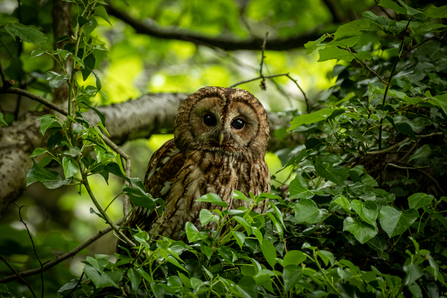I'm lucky to have a small woodland in earshot of my garden. At this time of year, as I'm putting out bird food ready for the morning, I often hear my local tawny owls singing to each other as night-time descends.
This is a great time of year to listen out for the huhuhuhooooo call of a male tawny defending his territory. Autumn is peak time for youngsters to check out potential territories of their own so adult males, who may have held their patch of woodland for ten or twenty years, will be watchful of young interlopers. Breeding can start as early as January, however, so as well as defending a territory, some of the calls may well be an owl serenading his mate. The too-wit too-woo call is actually a duet between female and male, the female making the higher pitched too-wit with the male's warbling too-woo following it. A few years ago I was lucky enough to have been standing almost directly underneath a singing male tawny owl; not only did the unexpected sudden call nearly make me jump out of my skin but the sound was one of the purest I've ever heard.
You may hear them but tawny owls are remarkably hard to see. Even as the leaves change colour and fall to the ground, a tawny will have spotted you long before you've spotted it. Their chestnut brown bodies are flecked with lighter and darker markings, camouflaging them beautifully with the trees that they sit amongst. It's usually only movement or a noise that gives away their presence. The only ones I've spotted have been mobbed by birds, aware of the potential threat posed by this predatory species, or in the case of the one in the photo at the top of the page, it flew across the road in front of my car and I spotted where it landed.





